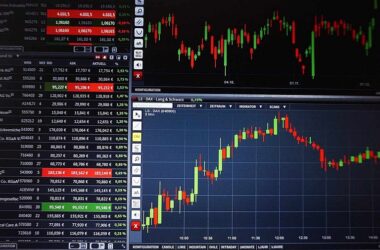Stock indices are a tool that traders use to measure the performance of a particular stock market or group of stocks. By tracking the movement of an index, traders can get a good idea of how the overall market is performing.
There are many different stock indices worldwide, each measuring the performance of a different market or group of stocks. The most famous index is probably the Dow Jones Industrial Average (DJIA), which tracks the performance of 30 major US stocks. Other popular indices include the S&P 500, the Nasdaq Composite, and the FTSE 100.
How do traders use stock indices?
There are several ways that UK traders can use stock indices to their advantage. Firstly, they can use indices as a way to measure market sentiment. If the market is moving higher, sentiment is likely positive. Conversely, if the market is falling, sentiment is likely negative.
Indices in the UK can also be used as a leading indicator for the market’s overall direction. By tracking the movement of an index, traders can get a good idea of where the market is heading in the short term.
Lastly, stock indices can be used as a tool for diversification. By investing in a basket of stocks that make up an index, traders can spread their risk and reduce their exposure to any particular stock.
What are the different types of stock indices?
There are several different stock indices, each of which measures the performance of a different market or group of stocks.
Price-weighted index
The most common type of index in the UK is the price-weighted index. This index type is calculated by taking the sum of all the stocks’ prices and dividing it by the number of stocks.
Other types of indices include:
- Dividend-weighted indices – these indices weight stocks according to their dividend yield.
- Equal-weighted indices – these indices weight each stock in the index equally.
- Market-cap-weighted indices – these indices weight stocks according to their market capitalisation.
Why do traders use stock indices?
Traders use stock indices to decide when to buy and sell shares. If an index rises, the underlying stocks are doing well, and the market is bullish. Conversely, if an index is falling, the underlying stocks perform poorly, and the market is bearish.
By tracking the performance of a stock index, traders can get a good idea of how the overall market is performing and make decisions accordingly.
What are the risks of using stock indices?
While stock indices can be a helpful tool for traders, some risks are also associated with using these trading systems.
The first risk is that stock indices can be volatile and move up and down quickly, making it hard to predict which way the market will move in the short term.
The second risk is that stock indices only measure the performance of a particular market or group of stocks. They don’t consider the performance of individual stocks, which means that an index can rise even if some of the underlying stocks are performing poorly.
What are some popular stock indices?
As we mentioned earlier, the Dow Jones Industrial Average (DJIA) is probably the most famous stock index globally. Other popular indices include the S&P 500, the Nasdaq Composite, and the FTSE 100.
The DJIA stock indices are price-weighted, considering each component stock’s share price. The S&P 500 and Nasdaq Composite are both market-cap weighted indices, which means that they consider the market capitalisation of each component stock.
The FTSE 100 is a market-cap weighted index that tracks the performance of the 100 largest companies listed on the London Stock Exchange.
In conclusion
Stock indices are valuable for traders who want to track the overall market’s performance or a particular sector. By monitoring an index, traders can decide when to buy and sell shares. Novice traders should use an experienced online broker such as Saxo bank before using stock indices. Check it out here.






